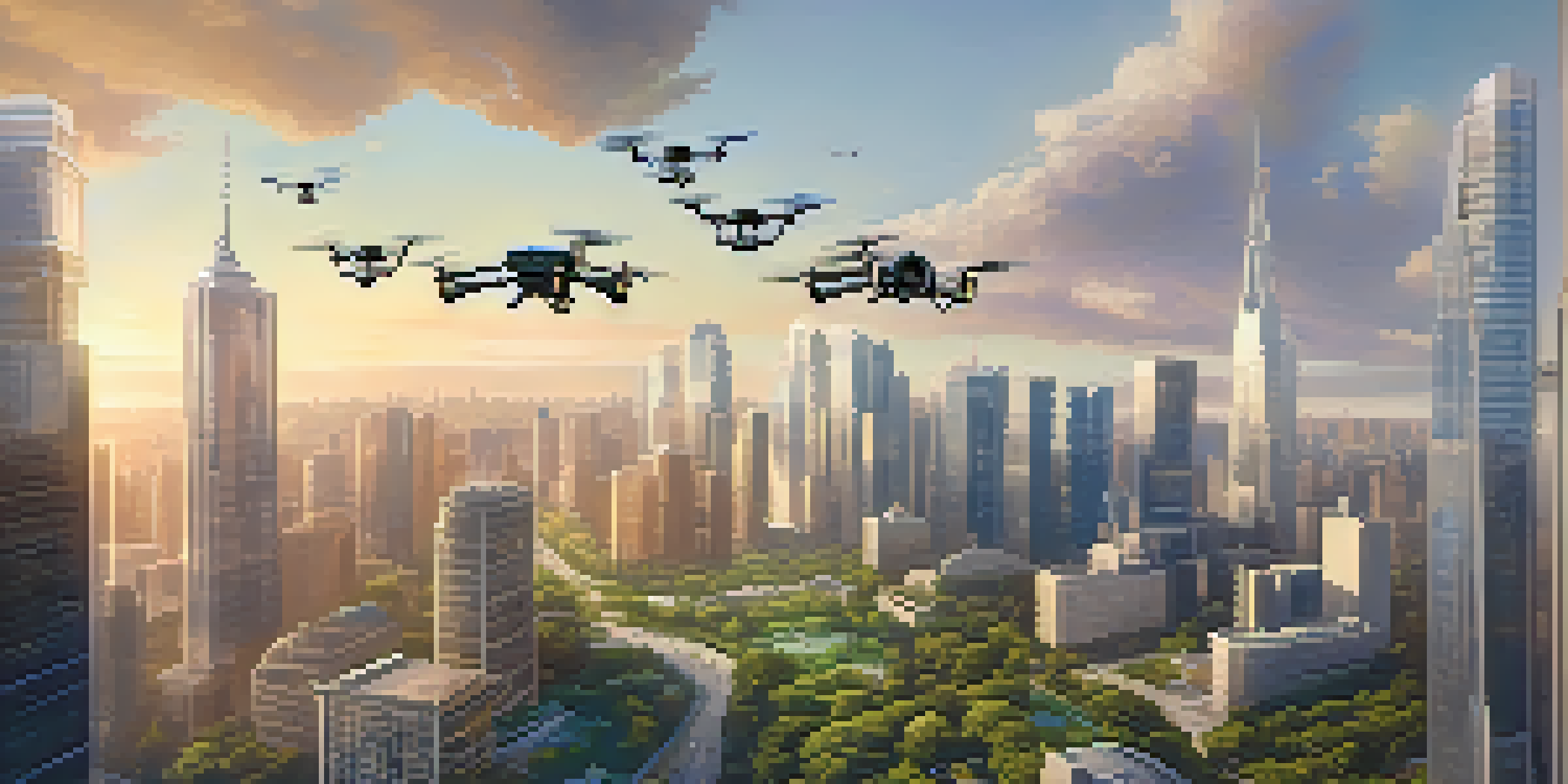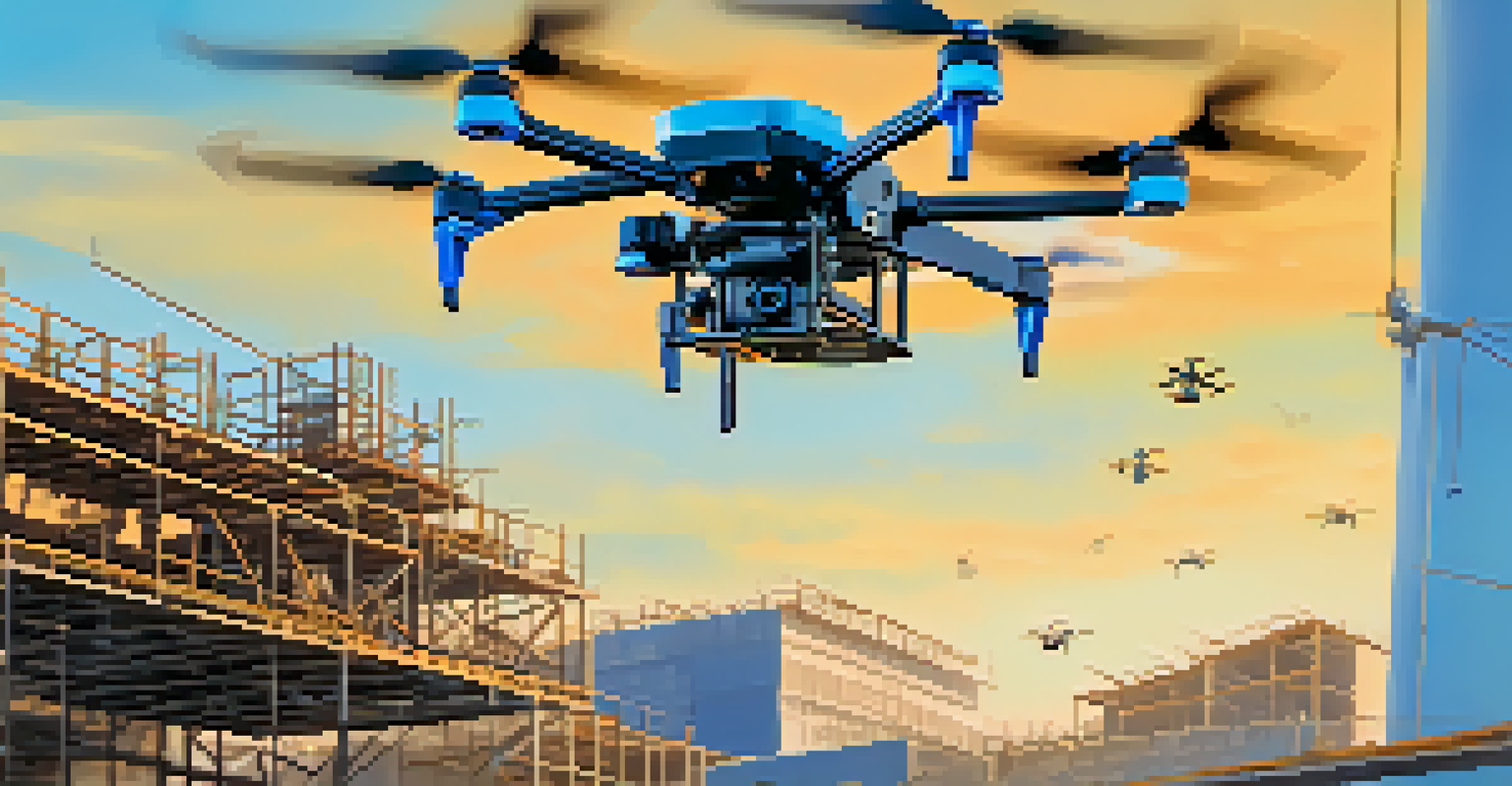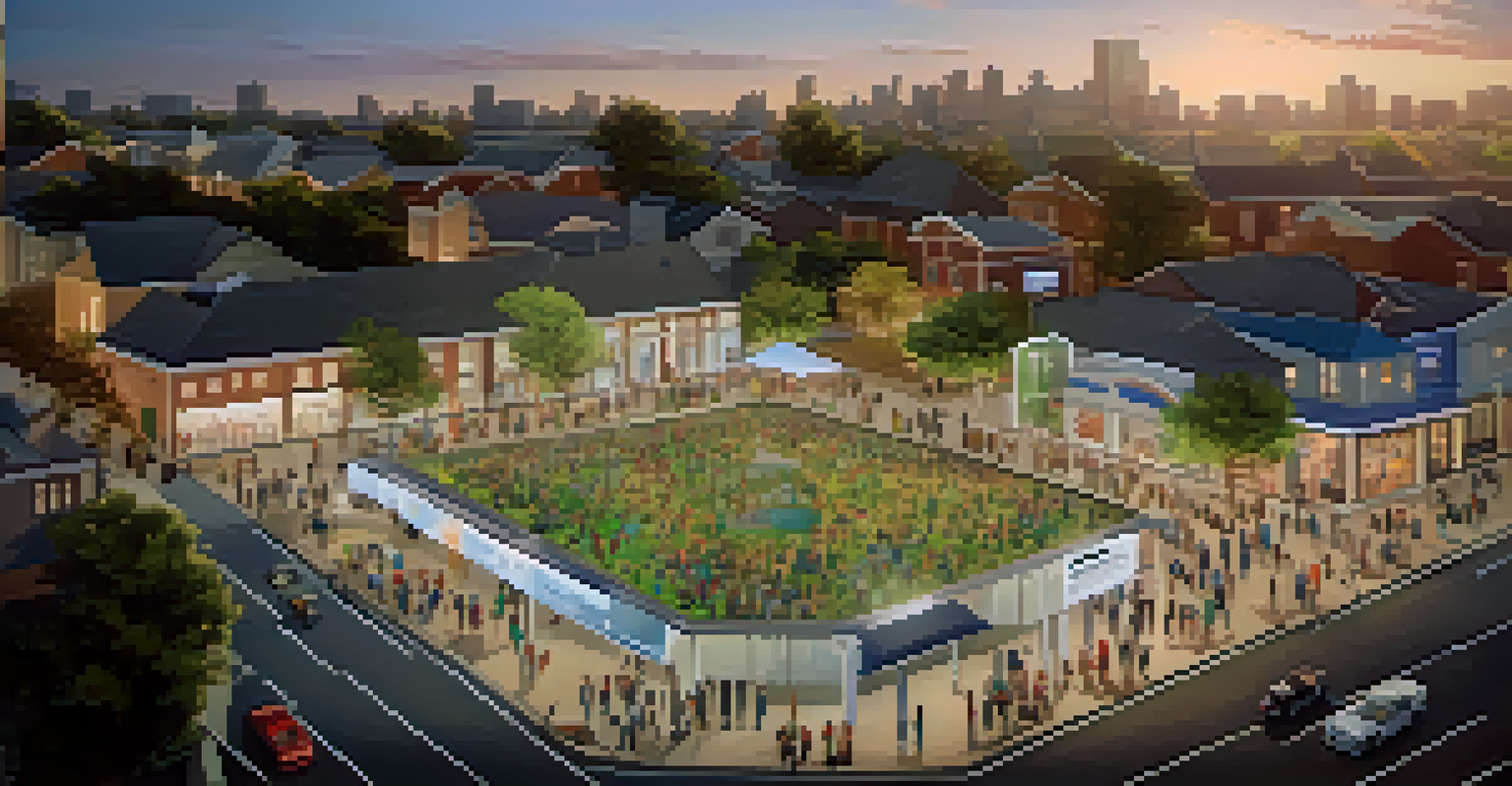Utilizing Drones for Urban Planning and Development

The Rise of Drones in Urban Planning
Drones have rapidly evolved from being mere gadgets to essential tools in urban planning. These flying devices provide a bird's-eye view of city landscapes, allowing planners to assess areas more effectively. Their ability to capture high-resolution images and videos helps visualize complex projects, making the planning process more efficient and informed.
Drones are the new eyes of urban planners, allowing us to see our cities from a perspective we never had before.
Furthermore, drones can quickly cover vast areas that would take traditional methods much longer to survey. This speed not only saves time but also reduces costs associated with ground surveys. As cities continue to grow and evolve, integrating drones into urban development strategies becomes increasingly vital.
Ultimately, the rise of drones signifies a shift towards smarter, data-driven urban planning. By harnessing this technology, planners can make more informed decisions, paving the way for more sustainable and efficient cities.
Enhancing Data Collection and Analysis
One of the most significant advantages of drones in urban planning is their ability to collect data quickly and accurately. Equipped with various sensors and cameras, drones can gather information on topography, vegetation, and infrastructure. This data is invaluable when creating detailed maps and models that inform developmental decisions.

Moreover, drones can be programmed to fly predetermined paths, ensuring consistent data collection over time. This feature allows urban planners to monitor changes in the environment and adapt their strategies accordingly. The integration of real-time data into planning processes enhances responsiveness to urban challenges.
Drones Enhance Urban Planning
Drones provide a bird's-eye view and efficient data collection, revolutionizing the urban planning process.
In essence, drones transform data collection from a cumbersome task into a streamlined process, promoting informed decision-making. As cities become more complex, the need for accurate and timely data is more crucial than ever.
Improving Community Engagement
Drones also play a pivotal role in enhancing community engagement during the urban planning process. By providing aerial imagery and 3D models, they help residents visualize proposed projects more effectively. This visual representation can demystify complex plans, allowing for better public understanding and feedback.
The future of urban planning lies in our ability to embrace technology and use it to build smarter, more sustainable cities.
Additionally, engaging the community is essential for successful urban development. Drones can capture stunning visuals during community meetings or presentations, drawing more attention and interest. This involvement fosters a sense of ownership among residents, making them more likely to support planned initiatives.
Ultimately, using drones in community engagement not only enhances transparency but also builds trust between planners and residents. When people see their input valued, they become more invested in the development process.
Streamlining Site Inspections and Assessments
Another significant benefit of using drones in urban planning is their ability to streamline site inspections and assessments. Traditionally, these inspections could be time-consuming and labor-intensive, requiring teams to physically traverse challenging terrains. Drones, however, can effortlessly navigate these areas, capturing vital information from above.
This capability is particularly valuable in urban environments, where access to certain sites may be restricted or hazardous. Drones can safely gather data on hard-to-reach areas, providing planners with a comprehensive view of the site without putting anyone at risk. This efficiency translates to quicker project timelines and reduced costs.
Boosting Community Engagement
By using aerial imagery and 3D models, drones facilitate better public understanding and involvement in urban development.
In summary, drones reduce the burdens associated with traditional site inspections, enabling planners to focus on analyzing the data collected. With this technology, urban planners can conduct thorough assessments while saving time and resources.
Supporting Sustainable Urban Development
Sustainability is at the forefront of modern urban planning, and drones can significantly contribute to these efforts. By providing precise data on land use, vegetation, and environmental factors, drones help planners make decisions that promote sustainable practices. This data can inform green spaces, transportation systems, and energy-efficient building designs.
Moreover, drones can monitor environmental changes over time, allowing planners to assess the impact of urban development on ecosystems. This ongoing assessment is crucial for ensuring that new projects align with sustainability goals. Implementing these insights into planning helps cities grow while preserving their natural resources.
Ultimately, leveraging drone technology aligns urban development with sustainability objectives. As cities strive to minimize their ecological footprints, drones offer a powerful tool to support these initiatives.
Facilitating Infrastructure Management
Drones are proving to be invaluable in managing and maintaining urban infrastructure. They can efficiently conduct inspections of bridges, roads, and buildings, identifying areas that require attention. This proactive approach can prevent costly repairs and extend the lifespan of critical infrastructure.
Additionally, drones can monitor construction sites, ensuring that projects adhere to safety and regulatory standards. By providing real-time data, they enable project managers to address issues as they arise, minimizing delays. This oversight is particularly important in urban environments, where disruptions can have widespread implications.
Support for Sustainable Practices
Drones help planners make informed decisions that align urban development with sustainability goals.
In summary, drones offer a practical solution for infrastructure management, combining efficiency with cost-effectiveness. Their ability to monitor and inspect infrastructure helps maintain the safety and functionality of urban environments.
Overcoming Regulatory Challenges
While the benefits of drones in urban planning are clear, navigating regulatory challenges remains a hurdle. Many cities have specific regulations governing drone usage, particularly regarding privacy and airspace restrictions. Understanding these regulations is crucial for urban planners looking to incorporate drone technology into their work.
Additionally, collaboration with local authorities is essential for ensuring compliance with safety standards. Engaging with regulators can help planners identify opportunities for drone use while addressing potential concerns. This proactive approach can facilitate smoother integration of drones into urban planning processes.

Ultimately, overcoming regulatory challenges requires a balance between innovation and compliance. By working closely with authorities, urban planners can harness the full potential of drones while maintaining public trust.
The Future of Drones in Urban Development
As technology continues to evolve, the future of drones in urban planning and development looks promising. Innovations such as artificial intelligence and machine learning are enhancing drone capabilities, allowing for even more sophisticated data analysis. This evolution will empower urban planners to make decisions based on predictive models and simulations.
Moreover, as drone technology becomes more accessible, we can expect to see increased adoption across various sectors of urban planning. From residential developments to large-scale infrastructure projects, drones will play an integral role in shaping our cities. This shift will likely lead to smarter, more resilient urban environments.
In conclusion, the future of drones in urban development holds immense potential. By embracing this technology, cities can create more efficient, sustainable, and engaging urban spaces for their residents.